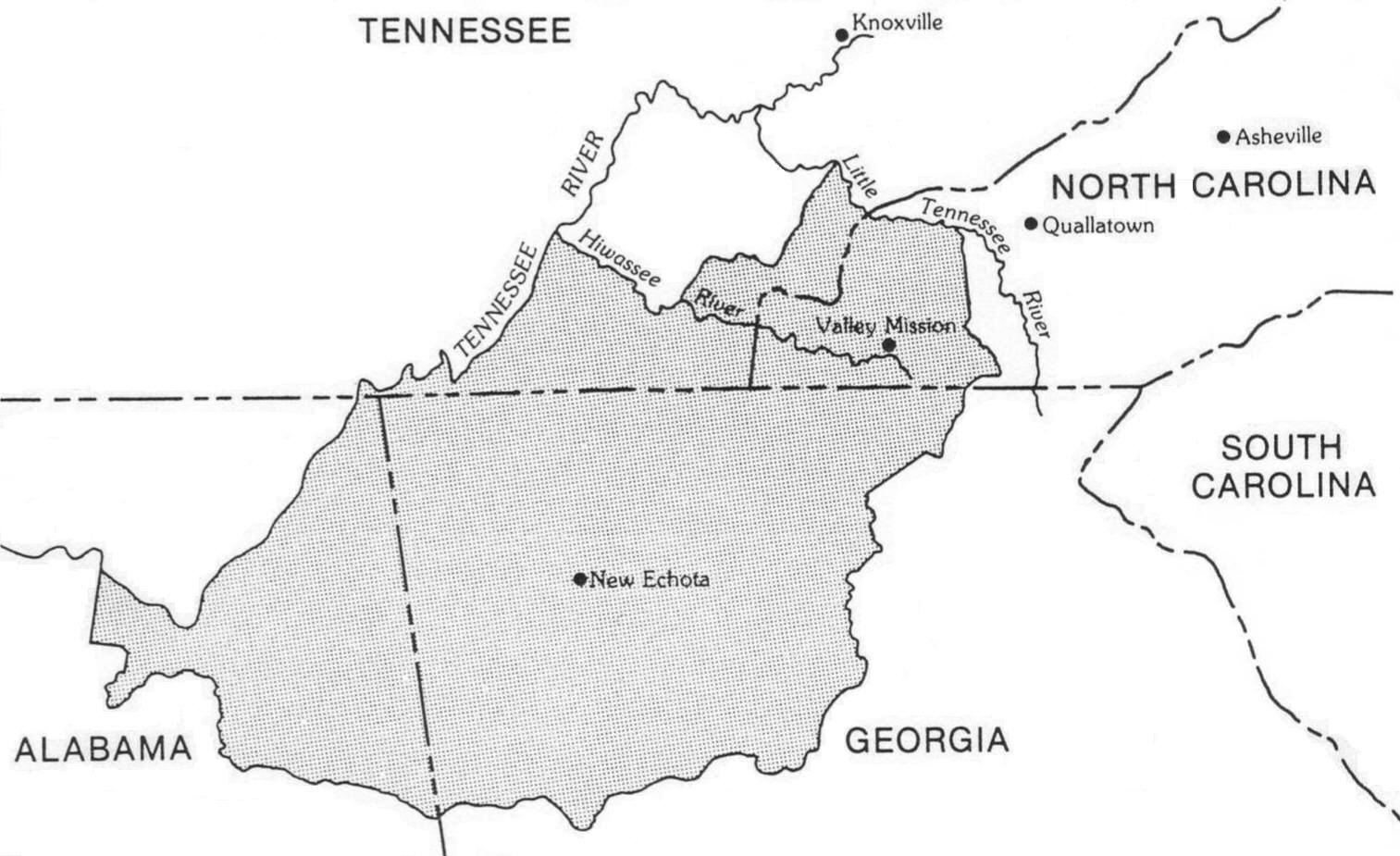|
The Eastern Cherokees on the Eve of Their Removal
(1819-1835)
The Old
Settlers
|

The eastern
Cherokee Nation before the Great Removal (1819-1838).
|
In 1794, after the destruction of the Cherokee towns of
Nickajack and Running Water in the southern part of central Tennessee,
a group of Chickamauga Cherokees under the leadership of Chief Bowl moved west,
away from the Cherokee Nation, across the Mississippi River into southeastern
Missouri. They possibly other Cherokees who had emigrated earlier and were
probably joined by additional members from time to time. In the winter of
1811-1812, the devastation of the great New Madrid Earthquake persuaded this
western Cherokee group to leave the area and move farther west into north
central Arkansas between the White and Arkansas rivers.
The western Cherokees received formal title to their land by
virtue of a treaty between the United States and the Cherokees, signed on July
8, 1817. By this treaty, the Cherokee Nation ceded an area in the east Nation
equal to that land occupied by the Western Cherokees in Arkansas. Under this
same treaty the United States government began actively encouraging Cherokees to
move west, and several hundred additional Cherokees took advantage of the
inducements and moved to Arkansas.
On May 6, 1828, the Western Cherokees ceded their Arkansas
land for new land in the eastern half of the present state of Oklahoma. Cherokee
emigration to the west was again strongly encouraged by the United States and
many more Cherokees began to move west. By the early 1830's, more than 4,000
Cherokees were living west of the Mississippi. By about 1835, these
Cherokees came to be known as the "Old Settlers." |
On August 17, 1846 the United States and the Cherokees entered into a new treaty
designed to soothe the tensions which had built up and address certain monetary
grievances. Because the Old Settlers had to give up their claim of ownership of
land in the west, they were given a per capita payment under provisions of the
treaty. After some disagreements over the date used to determine eligibility for
the payment, the Old Settlers finally decided that all those living as of March,
1851 should participate in the division. There were 3,273 persons enrolled on
the Old Settler Payroll, each person receiving $270.95.
Treaty Party
Cherokees
On December 29, 1835, a group of Cherokees in opposition to
the elected Chief, John Ross, signed the controversial Treaty of New Echota,
ceding all of the eastern lands of the tribe to the United States as of May,
1838. Those Cherokee who supported the treaty (known as the "Treaty Party")
began to move west and join the "Old Settler" Cherokees. The story of how the
remaining tribe members were forcibly removed over the infamous “Trail of Tears”
is well known.
This page is
under construction!

|